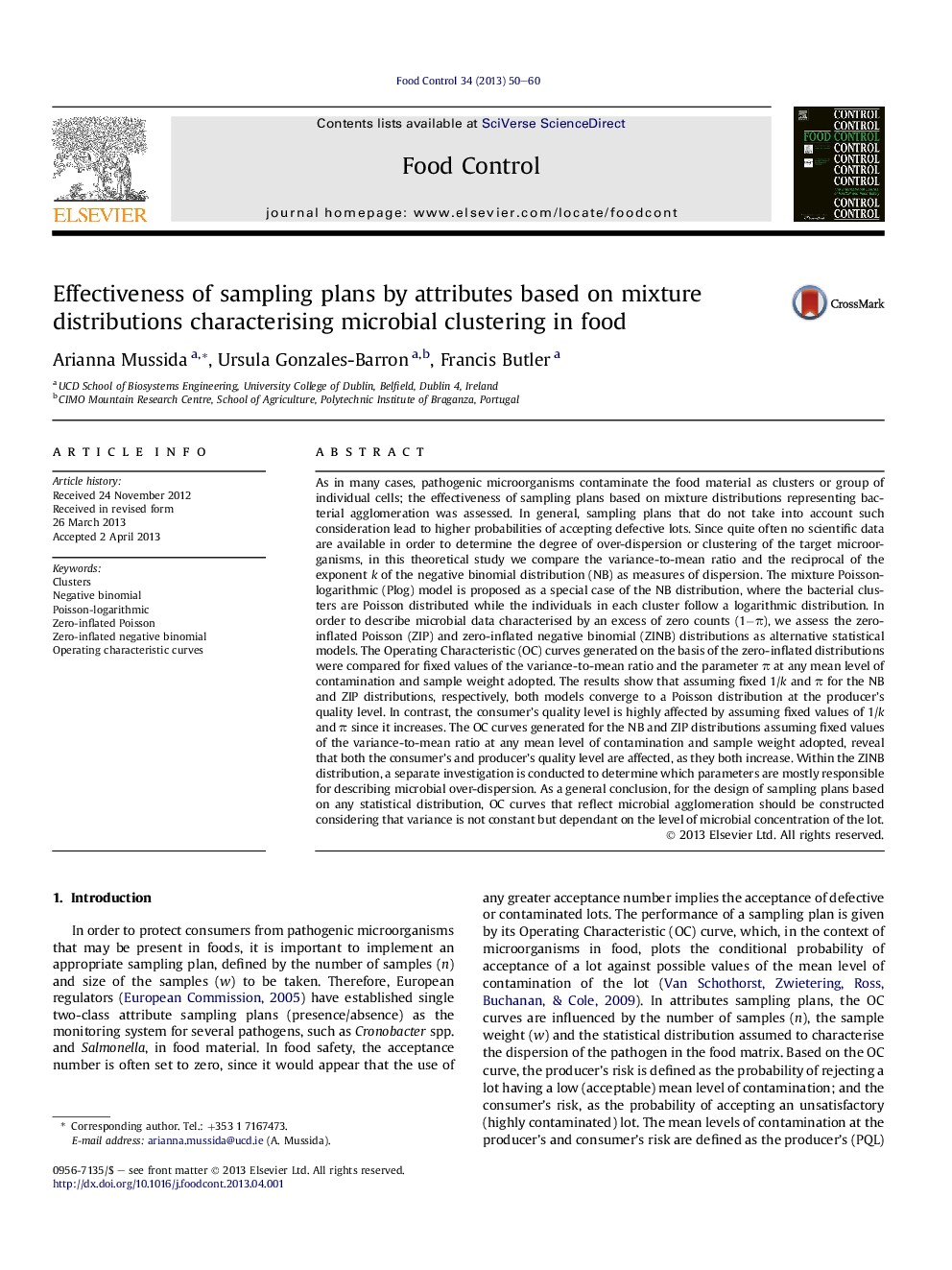| کد مقاله | کد نشریه | سال انتشار | مقاله انگلیسی | نسخه تمام متن |
|---|---|---|---|---|
| 6392698 | 1330442 | 2013 | 11 صفحه PDF | دانلود رایگان |
عنوان انگلیسی مقاله ISI
Effectiveness of sampling plans by attributes based on mixture distributions characterising microbial clustering in food
ترجمه فارسی عنوان
اثربخشی برنامه های نمونه گیری بر اساس ویژگی های براساس توزیع مخلوط که خوشه بندی میکروبی در غذا را مشخص می کند
دانلود مقاله + سفارش ترجمه
دانلود مقاله ISI انگلیسی
رایگان برای ایرانیان
کلمات کلیدی
خوشه ها، دو طرفه منفی، پواسون لگاریتمی، پواسون صفر بادی، دوقطبی منفی صفر، منحنی های مشخصه عملیاتی،
موضوعات مرتبط
علوم زیستی و بیوفناوری
علوم کشاورزی و بیولوژیک
دانش تغذیه
چکیده انگلیسی
As in many cases, pathogenic microorganisms contaminate the food material as clusters or group of individual cells; the effectiveness of sampling plans based on mixture distributions representing bacterial agglomeration was assessed. In general, sampling plans that do not take into account such consideration lead to higher probabilities of accepting defective lots. Since quite often no scientific data are available in order to determine the degree of over-dispersion or clustering of the target microorganisms, in this theoretical study we compare the variance-to-mean ratio and the reciprocal of the exponent k of the negative binomial distribution (NB) as measures of dispersion. The mixture Poisson-logarithmic (Plog) model is proposed as a special case of the NB distribution, where the bacterial clusters are Poisson distributed while the individuals in each cluster follow a logarithmic distribution. In order to describe microbial data characterised by an excess of zero counts (1âÏ), we assess the zero-inflated Poisson (ZIP) and zero-inflated negative binomial (ZINB) distributions as alternative statistical models. The Operating Characteristic (OC) curves generated on the basis of the zero-inflated distributions were compared for fixed values of the variance-to-mean ratio and the parameter Ï at any mean level of contamination and sample weight adopted. The results show that assuming fixed 1/k and Ï for the NB and ZIP distributions, respectively, both models converge to a Poisson distribution at the producer's quality level. In contrast, the consumer's quality level is highly affected by assuming fixed values of 1/k and Ï since it increases. The OC curves generated for the NB and ZIP distributions assuming fixed values of the variance-to-mean ratio at any mean level of contamination and sample weight adopted, reveal that both the consumer's and producer's quality level are affected, as they both increase. Within the ZINB distribution, a separate investigation is conducted to determine which parameters are mostly responsible for describing microbial over-dispersion. As a general conclusion, for the design of sampling plans based on any statistical distribution, OC curves that reflect microbial agglomeration should be constructed considering that variance is not constant but dependant on the level of microbial concentration of the lot.
ناشر
Database: Elsevier - ScienceDirect (ساینس دایرکت)
Journal: Food Control - Volume 34, Issue 1, November 2013, Pages 50-60
Journal: Food Control - Volume 34, Issue 1, November 2013, Pages 50-60
نویسندگان
Arianna Mussida, Ursula Gonzales-Barron, Francis Butler,
